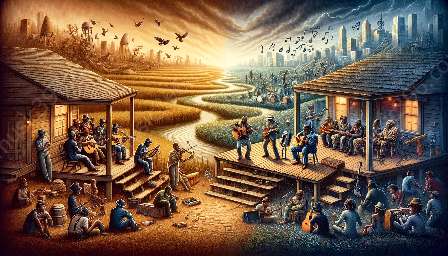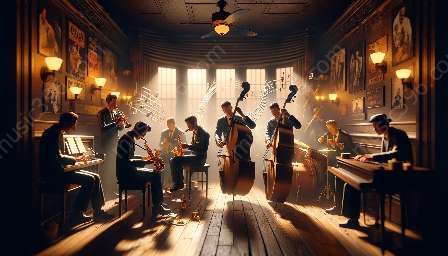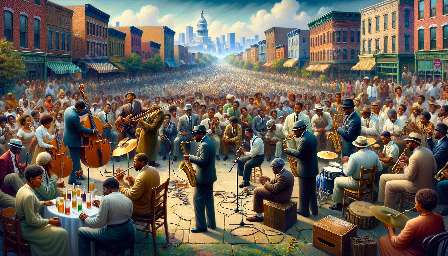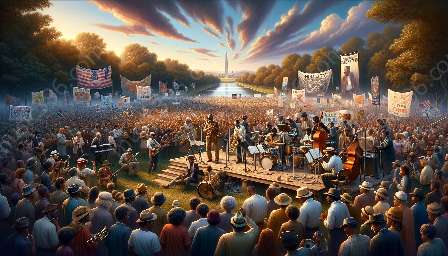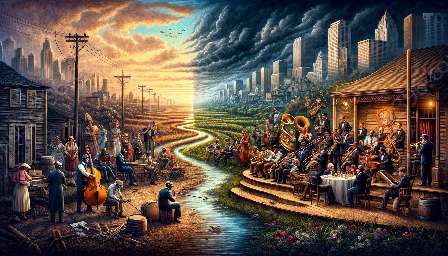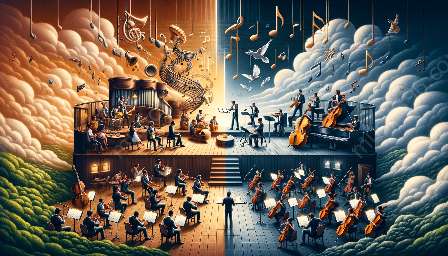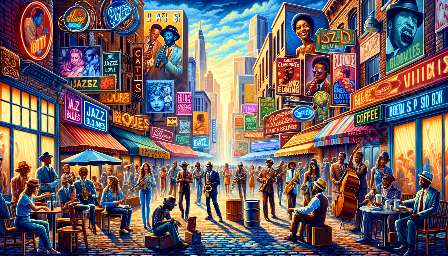Originating from the deep roots of African musical traditions, jazz and blues music have evolved over the centuries to become iconic genres that capture the soul and essence of cultural expression. This comprehensive topic cluster will delve into the intricate history, influences, and evolution of jazz and blues, offering a captivating exploration of their rich musical heritage.
The Early Roots of Jazz and Blues
The origins of jazz and blues music can be traced back to the 19th century, where African musical traditions intertwined with European musical elements to create unique and expressive forms of musical storytelling. In the deep South of the United States, particularly in areas like New Orleans and Mississippi, the fusion of African rhythms, spirituals, work songs, and European harmonies gave rise to the foundational elements of jazz and blues.
Influences and Cultural Expressions
The historical context of slavery and the African diaspora played a significant role in shaping the essence of jazz and blues music. The emotional depth and resilience of African-American communities found expression in the lamentations and jubilations embedded in the music. The concept of call-and-response, polyrhythmic structures, and improvisational techniques became central elements in jazz and blues, reflecting the collective experiences and cultural expressions of a marginalized community.
The Great Migration and Urban Influence
With the onset of the Great Migration in the early 20th century, African-American communities moved from the rural South to urban centers across the United States. This cultural shift brought about new influences and the convergence of musical styles, further shaping the evolution of jazz and blues. The urban landscape became a melting pot of creativity, incorporating elements from ragtime, gospel, and other regional musical traditions, giving rise to a vibrant and diverse musical tapestry.
The Evolution of Jazz and Blues Over the Centuries
The evolution of jazz and blues music over the centuries reflects the dynamic interplay of cultural, social, and artistic influences. From its humble beginnings in the Southern plantations to its migration to urban centers and global resonance, jazz and blues have undergone a transformative journey, continually adapting to the changing landscapes of cultural expression and musical innovation.
Innovative Musicians and Musical Cross-Pollination
Throughout history, pioneering musicians have shaped the trajectory of jazz and blues, introducing new techniques, instruments, and stylistic interpretations. From early innovators like Louis Armstrong and Bessie Smith to modern virtuosos like John Coltrane and B.B. King, the evolution of jazz and blues has been propelled by a lineage of revolutionary artists who pushed the boundaries of musical expression. Additionally, the cross-pollination of musical genres, such as the fusion of jazz with rock, funk, and hip-hop, has contributed to the ever-evolving nature of jazz and blues music.
Global Impact and Cultural Significance
The cultural significance of jazz and blues extends far beyond the borders of the United States, resonating with diverse audiences worldwide. Jazz found a global audience through the influence of artists like Duke Ellington and Miles Davis, while blues music captivated international listeners through the emotive performances of artists like Robert Johnson and Muddy Waters. The universal themes of love, loss, resilience, and liberation portrayed in jazz and blues music have transcended geographical boundaries, leaving an indelible mark on the cultural tapestry of humanity.
Jazz & Blues: A Dynamic Interplay of Tradition and Innovation
The interplay of tradition and innovation lies at the heart of jazz and blues music, perpetuating their enduring allure and relevance in modern musical landscapes. While rooted in the traditions of the past, jazz and blues continuously embrace new forms of expression, blurring the boundaries of genre classifications and captivating audiences with their timeless narratives and emotive compositions.
Modern Expressions and Contemporary Revival
In contemporary music, the legacy of jazz and blues continues to thrive through the reinterpretation of classic compositions and the emergence of new, boundary-defying artists. From the revival of vintage blues recordings to the incorporation of jazz-infused elements in contemporary pop and R&B, the influence of jazz and blues remains palpable in the creative endeavors of modern musicians and music enthusiasts.
Cultural Preservation and Future Innovations
As custodians of cultural heritage, the preservation of jazz and blues becomes imperative in ensuring the continuity of their legacy. Cultural institutions, festivals, and educational programs play a pivotal role in safeguarding the traditions of jazz and blues, nurturing future generations of musicians and enthusiasts. Furthermore, the fusion of traditional elements with modern innovations continues to propel jazz and blues into new frontiers, reflecting the ongoing evolution and resilience of these timeless musical genres.


